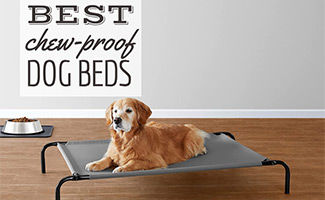How to Choose a Dog Food: Factors to Consider
By applying the foregoing criteria, we’ve found a thousand or more good foods to choose from; their manufacturers appear on our “Approved Dry Dog Foods” list. But we know what you’re going to ask next: How do you choose a dog food for your dog?
The answer depends on what you’re feeding your dog now and what he looks and feels like.
If he looks like a show dog (he’s at an appropriate weight and has a glossy, healthy coat and clean ears), he seems to feel good (he’s energetic without being hyperactive, he’s not itchy, and his appetite is good), and his poop is a good density (not too loose nor too hard), what you’re feeding him now is likely working just fine! Good job!
But if he’s too fat or too thin, his coat is without luster, he’s itchy and prone to ear infections, is constantly licking his paws or developing hot spots, lacks energy or is reactive and hyperactive, or has chronic diarrhea or constipation, then it’s time to change his food.
What you change it to depends on what changes you want to make in your dog and your dog’s needs.
- If he’s overweight, you need to reduce the number of calories he receives; a food with less fat and higher-quality protein sources is in order.
- If he’s too thin and you haven’t been able to get him to gain weight, a food with higher amounts of fat and high-quality protein in order.
- If he’s itchy year-round, he likely has allergies. You need to conduct a food elimination trial, to try to determine what ingredients he may be allergic to, so you can avoid those ingredients. At the very least, select a “limited-ingredient” food, one that contains just one species of animal protein and as few other ingredients as possible. Make notes daily about your dog’s itching; is it more or less frequent when you feed him a chicken-based diet than when he’s on a lamb-based diet?
Since most food allergies involve proteins, try to find a food that uses only one species of animal protein, and a single grain or carb source. Grains and legumes also contain protein, so these need to be considered as potential allergens as well.
- If he has digestive issues, he may need more fiber in his diet, or the right kind of fiber. Soluble fiber, found in oat bran, beans, lentils, chickpeas, and peas, slows things down in the digestive tract, helping relieve chronic diarrhea. Insoluble fiber, found in wheat bran, vegetables, quinoa, and whole grains, helps speed up the transit of food in the digestive tract and helps prevent constipation.
Some food ingredients, including most legumes, contain both soluble and insoluble fiber.
SUBSCRIBER ONLY: Click here to see Whole Dog Journal’s 2023 list of approved dry dog foods.
Check out our favorite dry dog foods in a variety of categories
Two More Factors When Choosing the Best Dog Food for Your Dog
What if your dog is just fine – maybe not ready for a show ring, but without any notable problems, either. How should you select the best dry dog food in that case?
- One obvious factor to consider is cost. Better-quality foods are considerably more expensive than low-quality foods. The size of your dog, and how many dogs you have, may affect your selection.
Keep in mind that the most expensive food is not necessarily the best dog kibble. High sales prices don’t always reflect the quality of the food ingredients. Keep in mind that some pet food companies maintain large research facilities; others spend a huge amount on advertising and/or sponsorships of dog-related events.
That said, we must warn you away from the lowest-cost foods. Most of them are more suitable for feeding birds than dogs.
- Make sure to check the nutritional adequacy statement (better known as the AAFCO statement) on the label to make sure you are buying a food that’s formulated to meet your dog’s needs. It’s one of the most important bits of information about the food, and yet it’s almost always listed in very tiny print.
The statement tells you which set of nutritional requirements the food meets: the standards for “growth” (puppies and pregnant or nursing females) or “adult maintenance.” Those two descriptions are sometimes referred to as “life-stage foods.” This is not to be confused with foods for dogs “of all life stages,” which means that the food has been formulated to meet the requirements of dogs of any age or life stage.
Some companies also offer what they call “senior” foods, but there are not different standards for senior dogs; check the AAFCO statement to see if the food was formulated to meet the requirements for adult maintenance or all life stages.
- The energy density of the food – how many calories it contains – is something else to consider. Say you’ve been feeding a product with 300 calories per cup, and your dog, who’s at a healthy weight, gets two cups a day. If you switch to a food with 400 calories per cup, and you keep feeding him two cups a day, you will be giving him 200 more calories a day more than you were. He won’t stay at that ideal weight for long, unless you reduce the amount you feed, in this case, to a cup and a half. Will feeding him 25% less than you were previously leave him hungry and disgruntled, leading him to raid the cat food and counter-surf? He may be better off with a lower-calorie food.
SUBSCRIBER ONLY: Click here to see Whole Dog Journal’s 2023 list of approved dry dog foods.




